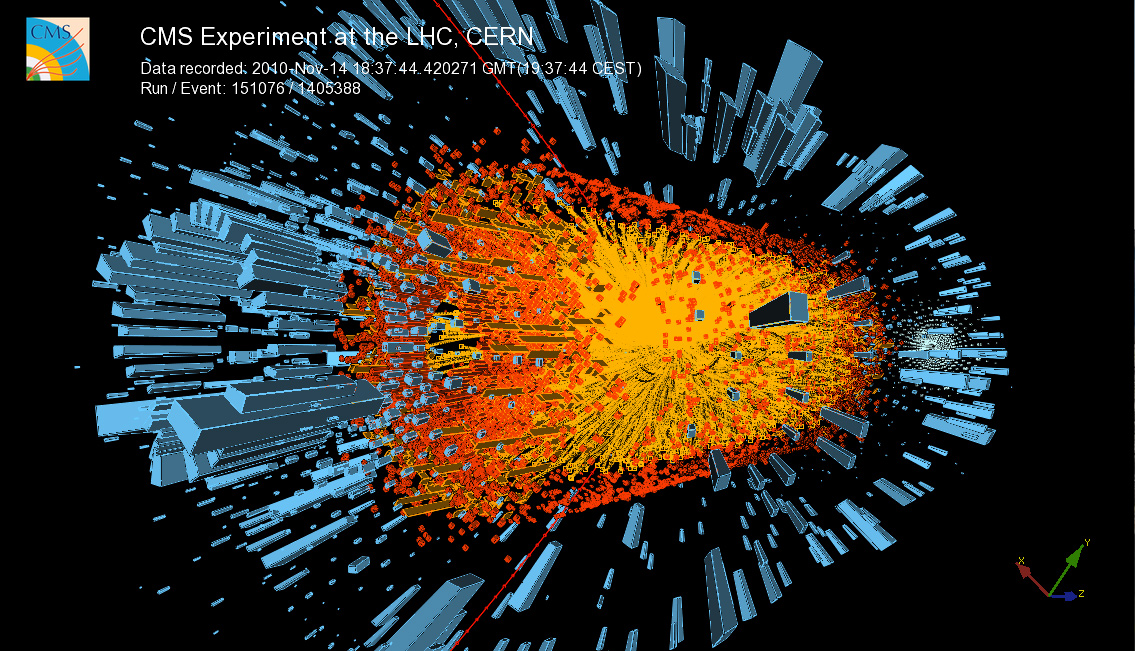
Curious minds might wonder why the LHC, which successfully ran at 7 TeV during the pp run of 2010 began the new year with proton collisions at a significantly less energy of 2.76 TeV. The fact is that this lower energy allowed experiments such as CMS to compare data accumulated from proton collisions with those from collisions of lead nuclei, which occurred at a per-nucleon energy of 2.76 TeV in 2010.
Perhaps one of the most interesting results to emerge from this comparison relates to the measurement of Υ (Upsilon) particles in the two, very different, post-collision environments.
This result along with several others were presented by CMS at the Quark Matter '11 conference, held in Annecy, France between 23rd and 28th May.
The lead-nuclei collisions also yielded the first ever measurements of a wide range of phenomena including very energetic jets, W and Z bosons as well as isolated photons.
These results truly show the versatility and overall ability of the CMS detector, including the unparalleled muon detection and measurement system, which enabled the precise measurement of J/Ψ and Υ events. The continued excellent performance of the LHC promises to provide many more phenomena during the next heavy-ion run, scheduled for later this year. We look forward to a period of path-breaking research into the conditions that existed only microseconds after the Big Bang.
Figure caption: Candidate Υ decay to two muons observed in a lead-lead collision at the LHC.
- Log in to post comments

